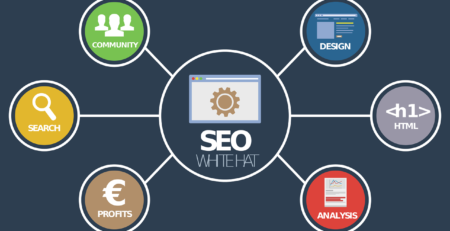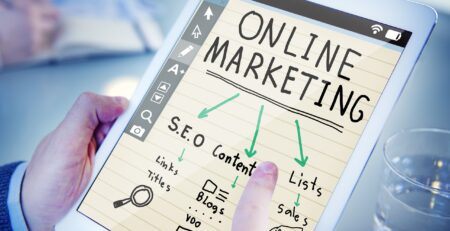Search Engine Optimization (SEO) is a critical aspect of digital marketing. It involves optimizing your website to improve its visibility and ranking on search engine results pages (SERPs). On-page SEO, in particular, focuses on optimizing individual web pages to rank higher and earn more relevant traffic in search engines.
Implementing on-page SEO best practices can significantly impact your website’s performance and help achieve your business goals. In this article, we’ll discuss the ultimate on-page SEO checklist consisting of 10 crucial steps to boost your website’s ranking.
1. Keyword Research and Optimization
Keyword research is the foundation of any successful on-page SEO strategy. It involves identifying relevant keywords and phrases that your target audience is using to search for information related to your business or industry. Once you have a list of targeted keywords, you can strategically optimize your website’s content, including the title tags, meta descriptions, headers, and body text, to improve its relevance and ranking for those keywords.
Example:
If you’re a digital marketing agency targeting small businesses, some relevant keywords might include “digital marketing for small businesses,” “online marketing strategies,” or “SEO for local businesses.”
2. High-Quality and Relevant Content
Creating high-quality and relevant content that meets the needs of your target audience is essential for on-page SEO. Your content should be informative, engaging, and valuable to your website visitors. Additionally, incorporating your targeted keywords naturally within your content can help increase its relevance and visibility in search engines.
Example:
If you’re running a travel blog, writing in-depth guides about popular destinations, offering travel tips, and sharing personal experiences can attract more readers and improve your website’s on-page SEO performance.
3. Title Tags and Meta Descriptions
Title tags and meta descriptions are HTML elements that provide concise summaries of web pages. Optimizing these elements with relevant keywords and compelling descriptions can improve click-through rates and signal to search engines what your page is about, potentially boosting its ranking in search results.
Example:
A title tag optimized for a web design company might look like this: “Expert Web Design Services | Enhance Your Online Presence”
4. URL Structure Optimization
Your website’s URL structure should be clean, descriptive, and include targeted keywords where relevant. Using user-friendly URLs can improve user experience and make it easier for search engines to crawl and index your web pages.
Example:
A URL for a blog post about social media marketing could be structured as “yourwebsite.com/social-media-marketing-tips.”
5. Internal Linking
Internal linking involves linking to other relevant pages within your website. When done strategically, internal linking can help search engines understand the hierarchy and structure of your website’s content, distribute page authority, and improve the user experience by guiding visitors to related content.
Example:
If you’re writing a blog post about email marketing, you can include internal links to related articles, such as “The Ultimate Guide to Building an Email List” or “10 Email Marketing Best Practices.”
6. Image Optimization
Optimizing images on your website involves using descriptive file names, alt text, and proper image sizes for faster loading times. Including relevant keywords in your image alt text can improve accessibility for visually impaired users and provide additional context for search engines.
Example:
An image of a gardening tool with an alt text that says “best-gardening-tools-for-vegetable-gardens” can improve the SEO performance of a gardening website.
7. Mobile-Friendly Design
With mobile devices accounting for a significant portion of web traffic, having a mobile-friendly website is crucial for on-page SEO. Responsive design, fast loading times, and intuitive navigation are essential for providing a seamless user experience across different devices.
Example:
If your website is not optimized for mobile, it may result in higher bounce rates and lower search engine rankings due to poor user experience on mobile devices.
8. Page Speed Optimization
Page speed is a critical factor for both user experience and search engine rankings. Optimizing your website’s loading times by minimizing unnecessary elements, leveraging browser caching, and using content delivery networks (CDNs) can improve its performance and visibility in search results.
Example:
A website that takes several seconds to load may deter visitors and negatively impact its search engine rankings, especially on mobile devices with slower internet connections.
9. Schema Markup
Schema markup is a type of structured data that provides additional context to search engines about the content on your website. Implementing schema markup can enhance the appearance of your website in search results with rich snippets, such as star ratings, reviews, and event details, which can increase click-through rates and improve SEO performance.
Example:
Adding schema markup to a local business website can display business hours, contact information, and customer reviews directly in search results, making it more attractive to potential customers.
10. User-Focused Optimization
Ultimately, the goal of on-page SEO is to create a positive experience for website visitors. By focusing on user needs and providing valuable, well-organized content, your website can naturally attract more engagement, backlinks, and social shares, all of which contribute to improved search engine rankings.
Example:
A website that prioritizes user-focused optimization may incorporate easy navigation, clear calls-to-action, and relevant, helpful content that addresses common user queries and pain points.
Conclusion
Optimizing your website for on-page SEO is a continuous process that requires attention to detail and a solid understanding of best practices. By following the 10 crucial steps outlined in this on-page SEO checklist, you can enhance your website’s visibility, relevance, and authority in search engines, ultimately driving more organic traffic and achieving your business objectives.
FAQs
1. How long does it take to see results from on-page SEO?
The timeline for seeing results from on-page SEO efforts can vary depending on factors such as the competitiveness of keywords, website authority, and the consistency of optimization. Generally, significant improvements in rankings and organic traffic may take several weeks or months to materialize.
2. Can I prioritize some on-page SEO steps over others?
While all on-page SEO steps are important for holistic optimization, it’s possible to prioritize certain areas based on your website’s specific needs and opportunities. For example, if your website has significant issues with page speed, prioritizing page speed optimization may yield immediate improvements in user experience and search engine rankings.
3. Do I need to update my on-page SEO strategy regularly?
Yes, on-page SEO is an ongoing process that requires regular monitoring and adjustments. Search engines frequently update their algorithms, user behavior and preferences evolve, and new content and competitors enter the market. Regularly reviewing and updating your on-page SEO strategy ensures that your website remains competitive and relevant in search results.
4. How can I measure the success of my on-page SEO efforts?
You can measure the success of your on-page SEO efforts through various metrics, such as organic traffic, keyword rankings, click-through rates, bounce rates, and conversions. Utilizing web analytics tools, such as Google Analytics, can provide valuable insights into the performance of your website and the impact of your on-page SEO optimizations.
5. What is the role of off-page SEO in complementing on-page SEO?
Off-page SEO focuses on activities outside of your website, such as link building, social media marketing, and influencer outreach. While on-page SEO is crucial for optimizing individual web pages, off-page SEO helps build authority, credibility, and trust for your website across the web, ultimately contributing to improved search engine rankings and organic traffic.
6. Should I seek professional help for my on-page SEO strategy?
Depending on your resources, expertise, and the complexity of your website, seeking professional help from SEO experts or agencies can provide valuable insights, technical expertise, and efficient implementation of on-page SEO best practices. Professional assistance can help maximize the impact of your on-page SEO efforts and ensure long-term success in search engine rankings.










Leave a Reply